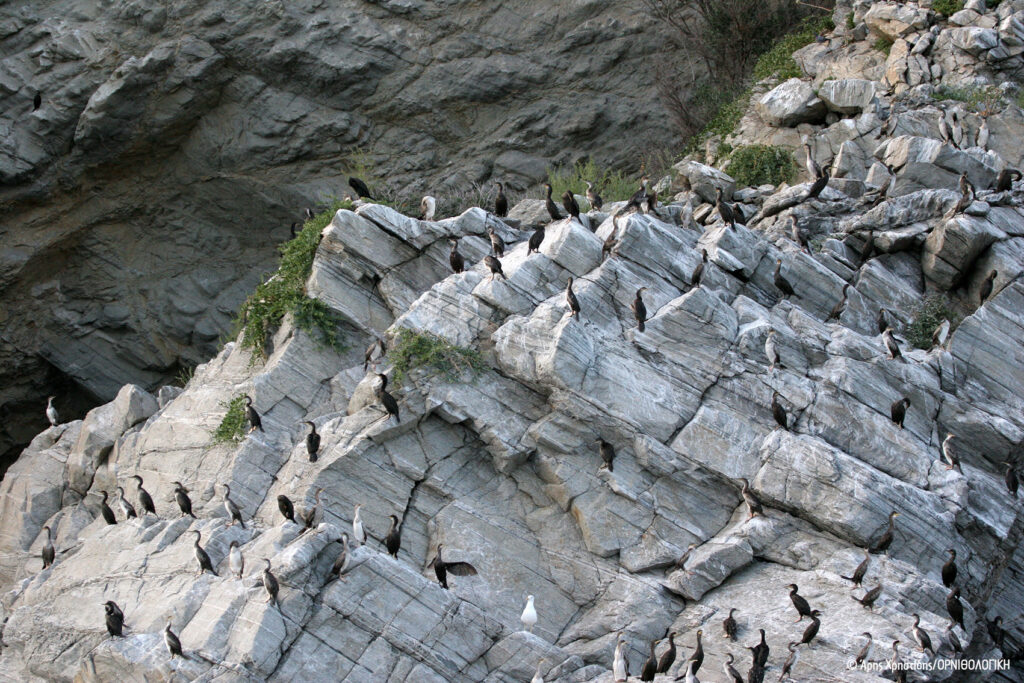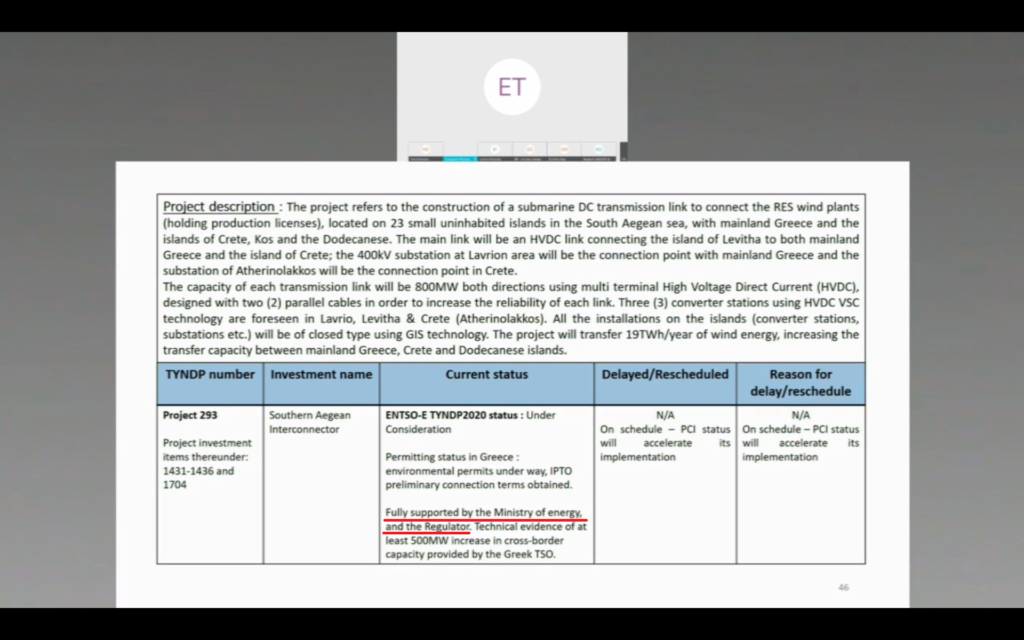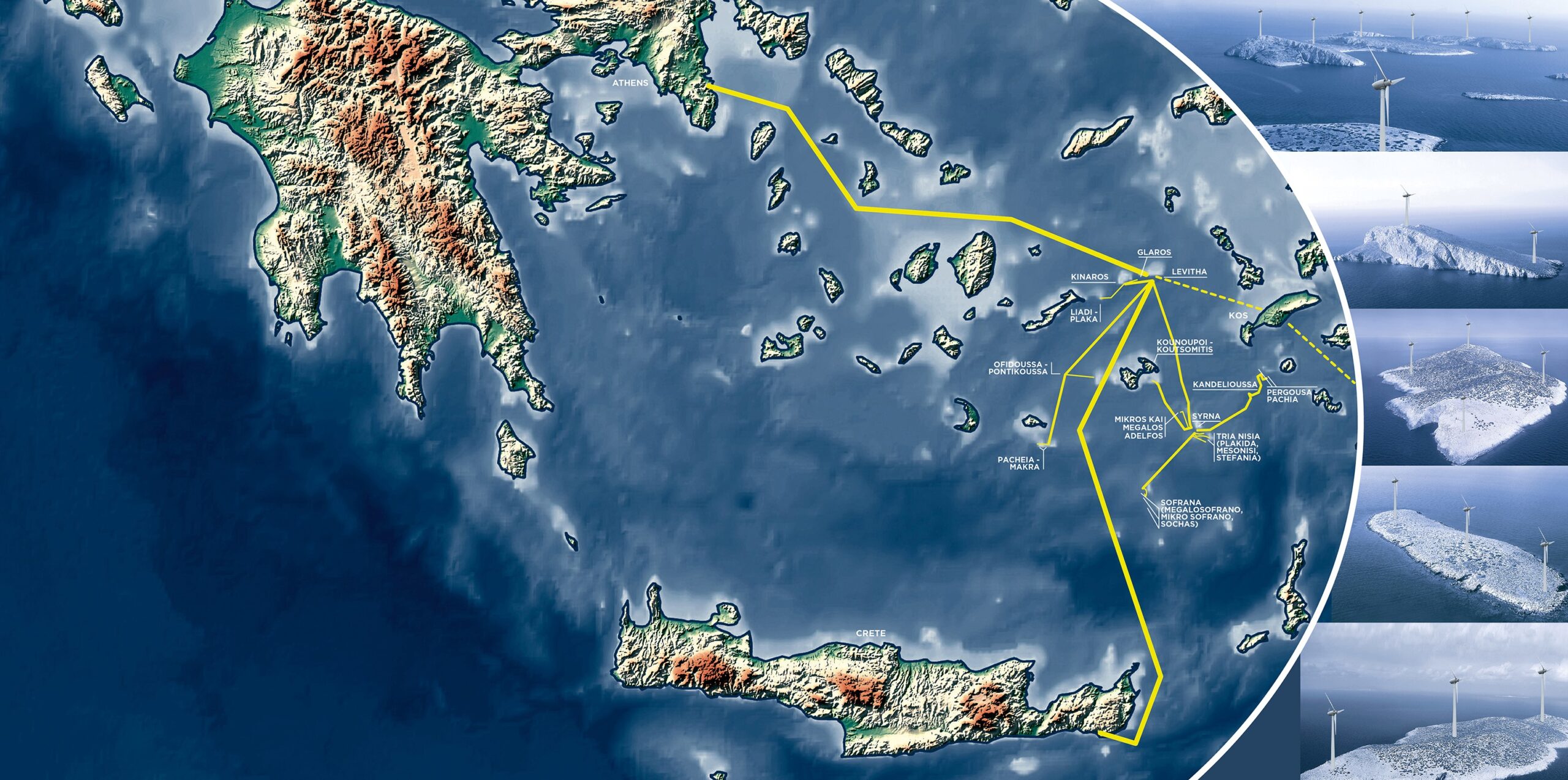English version: Georgia Nakou
The area of the southern Aegean Sea between the Cycladic islands and the Dodecanese is dotted with rocky islets, many of them uninhabited by humans but rich in bird life. On the margins of the busy ferry routes and the island-hopping schedules, the rocky archipelago has become known among ornithologists as “the Galapagos of the Mediterranean” for its biodiversity. Many rare and endangered species of seabird and other endemic fauna and flora flourish in this corner of the sea away from tourism and development. According to ornithological studies, uninhabited Greek islets host 80% of the global population of Eleonora’s falcon and 60% of the global population of Mediterranean seals.
Large parts of the area belong to the EU’s Natura 2000 network, habitats designated as protected areas for conservation of wild fauna and flora. EU law obliges national governments to shield these areas from uses which degrade the environment and threaten biodiversity.
This was until recently the site of an ambitious proposal, billed by the developers as “a flagship for the renewable energy industry, environment and the Greek economy”.
The AIGAIO Project was put forward by renewable energy company Eunice (EEG) envisioned a network of over 100 wind turbines connected by underwater transmission cables to mainland Greece and the islands of Crete, Kos and the Dodecanese. In addition to the turbines and the cables, the project would require the construction of 14 ports, roads totalling 71 km and supporting infrastructure including homes for staff and waste treatment plants on the islands.
AIGAIO was eventually turned down for an environmental license by Greece’s Environment and Energy Ministry in May 2021, but not before making it onto the shortlist of the EU’s marquee energy projects – despite flouting EU law.
Climate goals
The AIGAIO project was endorsed by its promoters within and outside developers Eunice as compatible with the European Green Deal, the EU climate change strategy which targets a transition to cleaner forms of energy in order to achieve climate neutrality by 2050. Greece’s own national Energy and Climate Change Plan, which is tied to the EU targets, targets more than a doubling of the country’s installed wind power capacity by 2030.
Large-scale projects such as AIGAION are often looked on favourably by governments, as they promise to hit these climate change targets fast.
The Green Deal, however, has other pillars too. One of them is to protect biodiversity, which is achieved through legally-binding measures such as the designation and safeguarding of protected areas. Sometimes these goals can come into conflict. . Wind farms can contribute to tackling climate change by reducing greenhouse gas emissions, but their misplacement can degrade habitats and biodiversity, which runs counter to the Member States’ environmental targets.

The objections
Starting in 2019, scientific experts, environmental groups and agencies warned of the risk of irreversible damage to protected areas from the AIGAION project, as the proposal spanned an astounding 10 Natura 2000 sites and six sites of special interest for birdlife. This proposal into Natura 2000 sites was initially possible, as over the last 15 years the Greek governments have failed to create a legal framework which would determine which activities are compatible with the conservation of the Natura 2000 sites and which not. In theory, any project, regardless of its impact, can be proposed and licensed to take place in a Greek Natura 2000 site. Greece’s failure to meet its legal obligations under the Natura scheme earned the country a condemnation by the Court of Justice of the European Union in 2020.
“This is the first time a project has been designed in the very heart of protected areas”, remarks Constantina Demiri of the Hellenic Ornithological Society, one of the first organisations to object to the scheme. “The project would eliminate the key feature which is the reason the islands have become one of the last remaining biodiversity refuges in Europe – the absence of human activity”.
A total of 13 groups, including academics at Greece’s leading universities and museums, wrote to the Prime Minister in November 2019 to voice their objections to the project.
By 2020, three separate statutory bodies – the state-appointed agencies responsible for managing the protected areas of the Cyclades and the Dodecanese under the Natura 2000 framework, as well as the Environment Ministry’s own Directorate of Natural Environment and Biodiversity Management – had advised against the project.
The negative assessments took into account that during the 5-year construction period the project would require dozens of workers, heavy construction traffic and bright lights, while its operation would include permanent staff and lighting and the supporting infrastructure would attract more traffic to the islets by making them more accessible.
The Environment Ministry’s Natural Environment Directorate noted that the project would have a “significant” and “irreversible” impact on protected species and habitats, and could permanently wipe out some bird populations. Its report also criticised the developers’ environmental impact study for falling short of legal requirements and failing to consider the combined impact of other licensed wind energy projects in the area.
“No idea”
Somewhat surprisingly for a large wind energy project, local communities were not at the forefront of the protest.An environmental group opposing the scheme was surprised to discover why.
“Our team travelled to Amorgos, Kinaros, Levitha and Astypalea to discuss the impact of the project and other renewables schemes on their islands”, recalls Akis Papasarantis of the Movement for the Protection of Aegean Islets. “It was the first time that local communities had been informed of the plans. They had no idea, despite the fact that in total 73 wind turbines were being planned for Astypalea and 71 for Amorgos”.
A Project of Common Interest?
At much the same time as Papasarantis and his group were visiting the islands, and despite the official stakeholders’ objections, the Aigaion proposal was being promoted by Eunice in Brussels as a project of pan-European strategic importance, with the endorsement of the Greek Ministry of Energy and the Greek energy regulator RAE.
Every two years, the European Commission publishes a list of cross border energy infrastructure projects which are designated Projects of Common Interest (PCIs). These are projects that are deemed to have strategic importance for achieving the EU’s energy policy and climate objectives – affordable, secure, and sustainable energy, and long-term decarbonisation of the economy. PCIs benefit from fast-track planning and permit granting, favourable regulatory treatment, streamlined environmental assessment processes, and – crucially – access to EU funding, all of which also make them more attractive to private investment.
At the final virtual meeting of the relevant regional working group (NSI East) on April 27, 2021 (webcast available here), the company representative for Kykladika Meltemia SA (a subsidiary of Eunice) claimed that the project “was fully supported by the Energy Ministry and RAE”, a claim reiterated by the ministry representative, who added, “As for the environmental issues, we believe we will be in a position to manage them when the time comes”.
The meeting yielded another surprise: not only had the ministry endorsed the proposal against the advice of its own civil servants, but the project had seemingly increased in scope. Instead of connecting 14 islets, as had been the original proposal, it now included 23. The 106 wind turbines in the original scheme had become 138, taking the total installed capacity from 486 MW to 582 MW. The changes are reflected both in the project description hosted on the website of the EU transmission operators ENTSO and Eunice’s own project description.

More importantly, the objections lodged to the projects by the statutory agencies would have rendered it ineligible for EU funding, as Ioli Christopoulou, policy director at the think tank Green Tank, explains. “The Energy Ministry’s internal departments acted correctly: they issued a negative opinion (in June 2020) after examining the full file and all the additional information they had at their disposal to assess the project’s impact on the Natura 2000 sites. Based on Directive 92/43 on habitats, since the relevant authority had determined that the project was likely to adversely impact a Natura 2000 site, the project could not proceed”.
A historic win for biodiversity
Welcoming the rejection of the project, the Hellenic Ornithological Society described the decision as “historic” in upholding the legal safeguards protecting biodiversity.
It also noted a further significant factor in the decision: the objectors to the proposal were not the usual NIMBYs (“Not In My Back Yard”) often blamed for obstructing development and objecting to every renewable energy project (frequently to the delight of the fossil fuel industry). No humans claim the islets as their “back yard”, and there was no one to raise objections on subjective terms such as aesthetic judgement – but they are home to the wildlife and endangered species, and for that reason they are objectively valuable on the terms clearly set out in the EU’s policy priorities and legislation.
The fate of the AIGAION project, however, should also serve as a cautionary tale. Its seemingly inexorable progress through the corridors of power illustrates how grand political projects can create a momentum almost capable of overriding reasoned and legally based objections.
Eunice Energy Group was offered the opportunity by Reporters United to comment on this story but did not respond. In response to an earlier request for comment by the Greek daily Efimerida ton Syntakton, Eunice accused the paper of presenting “one-sided, false, misleading, libellous and unsubstantiated positions”.
Reporters United approached the European Commission for comment on the expanded scope of the application submitted for inclusion in the PCI list. The Commission’s response did not address our specific questions.





